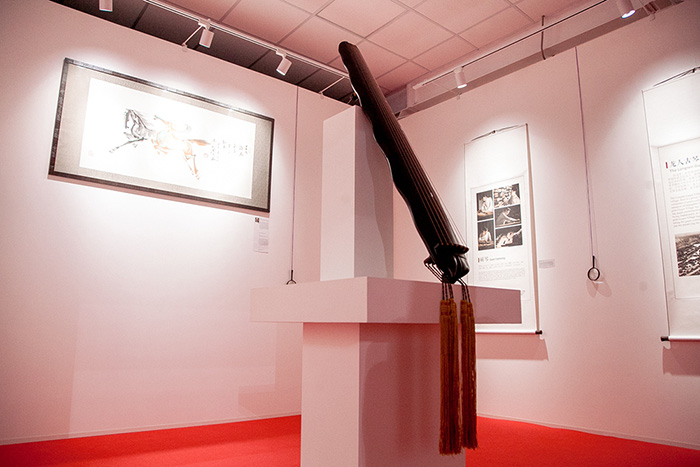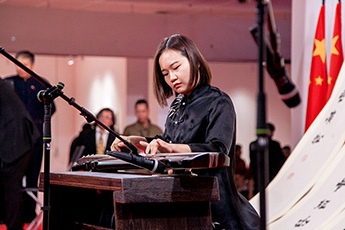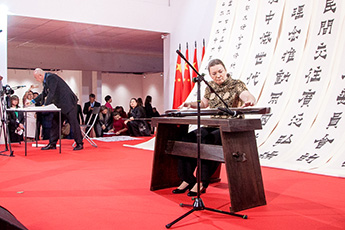“The Great Chinese Calligraphy and Painting” exhibition featured traditional Chinese musical instrument guqin
On top of talks and workshops, the “Great Chinese Calligraphy and Painting” exhibition also featured musical performances built around a traditional Chinese musical instrument, guqin. Guqin is part of the intangible cultural heritage of China, and can only be made by hand. Producing one guqin takes approximately seven years.
The exhibition enjoyed Chinese cither performances by Tong Qiu, the member of the Chinese association for studying guqin culture, the Chinese association for studying traditional ensemble music, the Chinese association for guqin cither, and the Association of Shandong province musicians, and Anastasia Novoselova, musical scholar and teacher, guqin cither, xiao and di flutes player, Ph. D. in the History of Arts.
Besides performances, the musical culture associated with guqin cither manifested as an exhibit donated to the Contemporary Museum of Calligraphy by its partner, a guqin factory “Longren Guqin,” located in Fujian province. This particular instrument was custom made for the Moscow exhibition, and its back carries a calligraphy inscription “The 70th anniversary of establishing diplomatic ties between Russia and China.” The factory also supplied educational materials unveiling the details of its making, design, and the preservation of culture associated with this ancient musical instrument.
 Display guqin donated to the Contemporary Museum of Calligraphy by “Longren Guqin” factory
Display guqin donated to the Contemporary Museum of Calligraphy by “Longren Guqin” factoryMan′s beauty is in the beauty of his writing.





